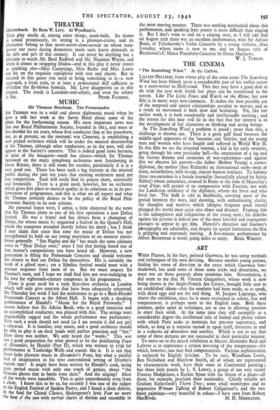ART
WHEN Picasso, in his fury, painted Guernica, he was using methods and techniques of his own devising. Because another young painter, finding his sense of direction in the years which Guernica fore- shadowed, has used some of those same tricks and distortions, we must not on those grounds alone condemn him. Nevertheless, it did seem to me that M. Vincent Guignebert, whose work is now being shown at the Anglo-French Art Centre, brought little new to an established idiom—that the omelette had been made, so to speak, with dried eggs and not the real thing. M. Jacques Lagrange, who shares the exhibition, since he is more restrained in colour, line and temperament, is perhaps more to the English taste. Both these painters, poles apart in technique, are at one in allowing emotion to enter their work. At the same time they still exemplify to a considerable degree the intellectual rule of formal and plastic values with which Paris seeks to maintain her pre-war supremacy, and which, so long as it remains turned in upon itself, threatens to end in a reductio ad absurdum and sterility. Which is not to say that some of these pictures are not successful in their particular manner.
To move on to the mixed exhibition at Messrs. Alexander Reid and Lefevre is to experience a certain lowering of the temperature—for which, however, one may find compensations. Parisian sophistication is replaced by English lyricism. To be sure, Wyndham Lewis, Ben Nicholson and Matthew Smith, all of whom are represented by characteristic work, have their roots in Continental painting ; but three little panels by L. S. Lowry, a group of not very recent Frances Hodgkinses, a Ruskin Spear with the bloom of a plum—all these, for example, proclaim their nationality. Chiefly notable are Graham Sutherland's Thorn Tree • some small monotypes and an impressive Woman Talking of Robert Colquhoun's, and the two finest paintings—very beautiful in colour—I have seen from Robert


























 Previous page
Previous page